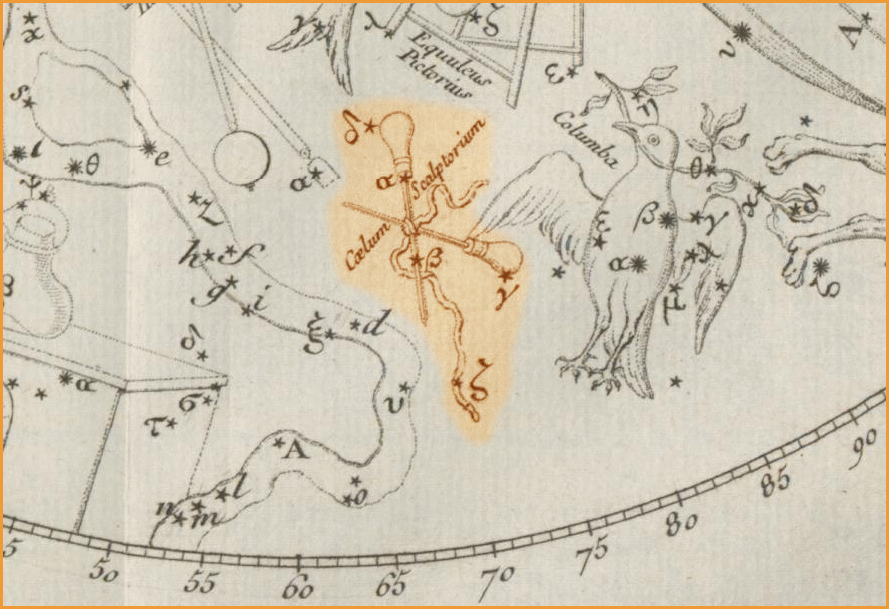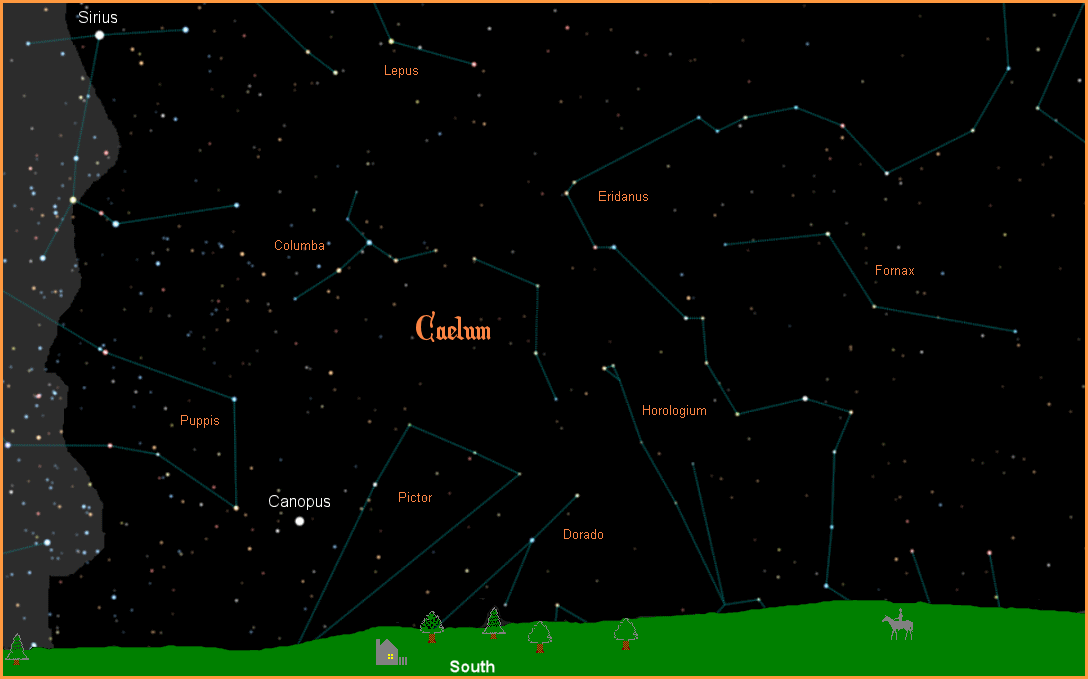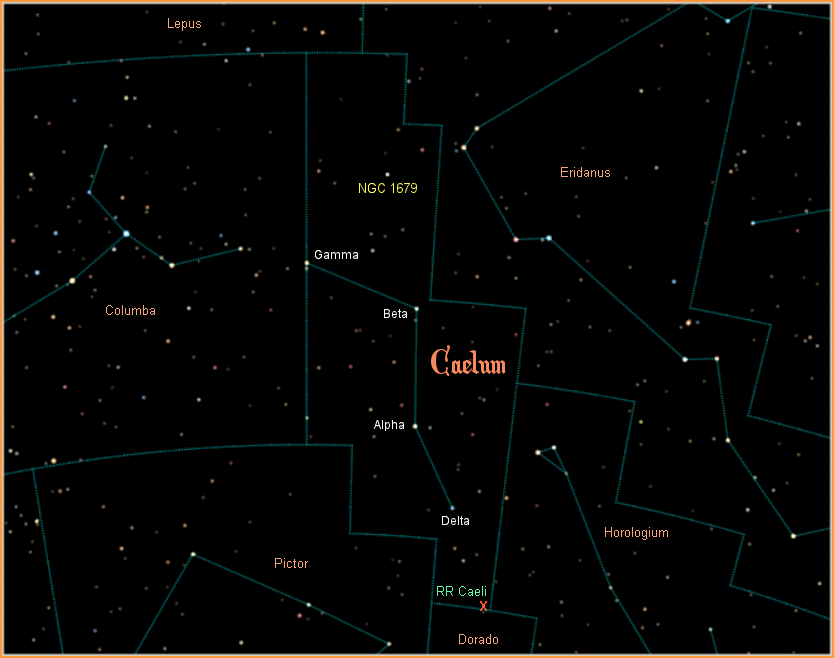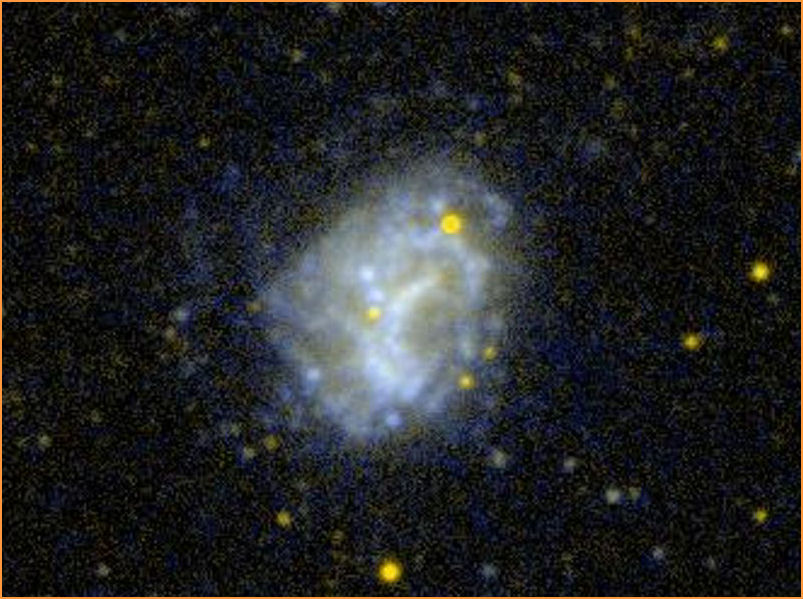| HOME |
|---|
CAELUM
The Chisel

Caelum Sculptorium - Nicolas Louis de Lacaille - 1763
| HOME |
|---|

In 1750, French Astronomer Nicolas Louis de Lacaille journeyed to the Cape of Good Hope (Cape Town), South Africa, to survey and catalogue the stars of the southern sky. At the end of his studies he introduced 14 brand new constellations to the world. He also broke up the mighty Argonaut ship, Argo Navis, into three more manageable constellations: Puppis, Vela, and Carina, the Latin names for the parts of the ship they represented. The identities Lacaille chose for his 14 brand new constellations, however, were a stark departure from the romance and magic employed through the ages. With the sole exception of Mensa (the table, named for the awe inspiring Table Mountain, in whose shadow Lacaille built his observatory), all of Lacaille's names celebrated the tools of science and art, possibly an homage to the Age of Enlightenment, which was in full swing at the time. Still, they were all deemed sufficiently authoritative to be included in the 88 officially sanctioned constellations of the International Astronomical Union in 1930.
The constellations added by Lacaille were: Antlia (the pump), Caelum (the chisel), Circinus (the compass), Fornax (the furnace), Horologium (the clock), Mensa (the table), Microscopium (the microscope), Norma (the normal), Octans (the octant), Pictor (the painter), Pyxis (the compass), Reticulum (the reticle), Sculptor (the sculptor), and Telescopium (the telescope).

Caelum is one of the smallest and dimmest constellations in the sky, and contains no named stars. Alpha Caeli is a binary system, with the larger, brighter star, Alpha Caeli A, classified as an F2V yellow main sequence star, similar to our Sun, although 1.5 times larger and 5 times brighter. It has a surface temperature of 7,100 degrees Kelvin, and a magnitude of 4.46. Its much smaller companion is a M0.5 red dwarf, with a magnitude of only 12.5. The binary pair take 130 years to orbit each other and reside at the not-too-far distance of 65.8 light years..
Beta Caeli, classified as an F3IV yellow main sequence star, similar to Alpha Caeli A. A bit farther away at 93.5 light years, its magnitude is reduced to 5.04. Spectroscopy indicates a possible close companion, probably a small brown dwarf.

Gamma Caeli consists of a pair of binaries, making it a four star system. One pair is 185 light years away, with the other pair much farther out at 341 light years. Since they are all in the same line of sight they appear as one star with a combined magnitude of 4.55.
Unlike the other three bright stars in the constellation, Delta Caeli stands alone, a behemoth, 8 times larger than our Sun. Classified as a B2IV blue subgiant, it is a very hot, young star with a surface temperature of 21,150 degrees Kelvin, making it over 2,500 times brighter than our Sun. Yet it appears in our sky at a modest magnitude of 5.07, due to its extreme distance of 709 light years.
There has been one planetary system discovered so far in Caelum, around the binary star RR Caeli, a red dwarf and a white dwarf that are so close together they only take 7 hours to orbit each other, the intense gravity of the smaller, denser white dwarf drawing material away from the larger red dwarf. There is at least one confirmed gas giant planet orbiting these stars, the system being 66 light years away, and the faint magnitude of 14.4 putting the stars out of reach of all but the largest telescopes.
There is only one deep sky object anywhere close to being accessible to amateur telescopes, and that is the spiral galaxy NGC 1679, with a magnitude of 11.5.

|
|
|
|
|
|